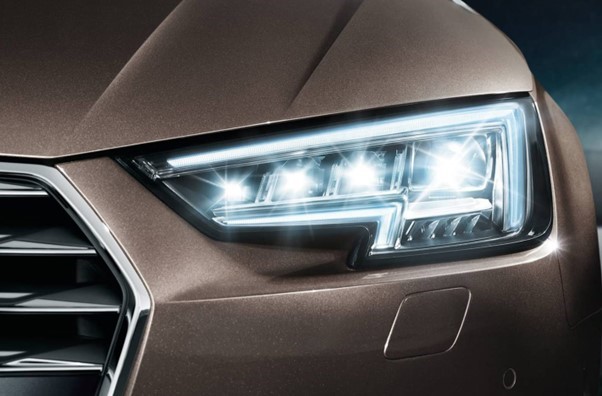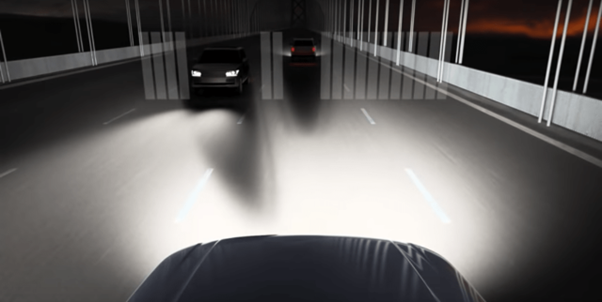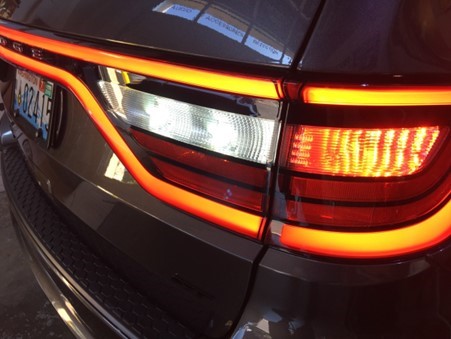 The automotive industry is rich with innovative approaches to the smallest details. It deals with environmental challenges, experiments with resources and materials, and of course, works hard to develop safety on the road. That is why every year we see more and more emerging technologies for car lights during the biggest automotive summits. In fact, sometimes, such novelties are so sudden and revolutionary that The National Highway Traffic Safety Administration (NHTSA) struggles to keep up. And unfortunately, some truly amazing features available in Europe and Canada get delayed here because of that.
The automotive industry is rich with innovative approaches to the smallest details. It deals with environmental challenges, experiments with resources and materials, and of course, works hard to develop safety on the road. That is why every year we see more and more emerging technologies for car lights during the biggest automotive summits. In fact, sometimes, such novelties are so sudden and revolutionary that The National Highway Traffic Safety Administration (NHTSA) struggles to keep up. And unfortunately, some truly amazing features available in Europe and Canada get delayed here because of that.
In this TOP-5, we will briefly review both approved and still anticipated designs and features because trends are more than that. They define what we will consider a common thing as progress goes on.
Smart Headlights Are Smarter Than You Think
As long as headlights work without a hitch and illuminate the road well, car owners don’t give them much thought. On a rare occasion of burning out or damaging, they take out the spare ones or go to an automotive bulb finder to get specs for a replacement.
And that is even more relatable to the drivers with smart headlights. This technology has been in use abroad for quite some time, but the NHTSA approved its installation on new cars and trucks only in February 2022.
“Smart headlights” is an umbrella term since there are so many unique models and technologies available on the market. However, when people hear smart car lights, they usually think about AFS or ADB headlights, so let’s compare them. The Adaptive Driving Beam or ADB for short, solves the problem with the dazzling brightness of the oncoming traffic. Some drivers use high beams in the most annoying way possible and blind everyone else with their lights. ADB headlights have sensors that tell them how to adjust the brightness, direction and even shape of the illumination. So no more eyesores in the future.
The Adaptive Front-lighting System (AFS) contrasts the ADB technology. Its main goal is to assist the driver in seeing better. The sensors can tell if the car has changed its elevation due to a different load, new tires, tire pressure or extra passengers. It adjusts the lights accordingly to illuminate the road ahead, depending on your speed, ground clearance and other important driving factors. And even changes the direction of the low beams when you start turning.
The Smartest Headlights – Matrix System
‘ 
A special type of smart headlights is called Matrix, and its functionality is as cool as the name suggests. Their features are not that different from the ADB and AFS lights, but the way they work is truly unique. They don’t block the light physically like other smart headlights. Instead, matrix headlights work as high beams built with tiny LED pixels grouped together. Depending on the signals from different sensors, these groups will temporarily get dimmer or shut down. This makes simultaneous bright illumination and eyesight protection possible. Just imagine that part of your beam that reaches the oncoming car suddenly disappears and illuminates everything around that car.
They were also approved this February, so now you will see more of these lights on the roads. Matrix headlights are expensive and sophisticated, but they might make driving safer and more enjoyable at night.
LED VS OLED Lights
Now the use of LED car lights is a frequently discussed question. They are not illegal, but a lot about them remains unclear. They are bright, they last very long and according to many resources, they should not be used in high beams. “LEDs are everywhere. They are a popular choice for headlights, but their brightness can make people hate you, and they are bad for rainy days,” says Ben Collins, a chief content editor at Lightning Lab.
Anyway, we know what they are and how they work, and know that they are used in smart headlights. But what are the OLED lights and is there any difference between the two? The OLED stands for The Organic Lights Emitting Diodes because they are made with organic substance, a special carbon. But their main distinguishing feature is that LEDs are spot light sources, and OLED technology emits lights from the broader surface.
Audi started using this technology in mass production in 2016 for taillights and indicators. But this should not be the only good application for OLEDs. Their light is the closes analogy to the daylight, the best illumination for our eyes. That is why big car manufacturers, alongside the lighting brands like OSRAM and many others, work on polishing this technology for headlights.
Laser Headlights
Laser beams are not reserved for science fiction, they are already used in headlights. These lights are unparalleled in both brightness and range. Manufacturers from OSRAM say that laser diodes used in headlights can be almost four times brighter than LEDs. This makes them even more compact and allows unique design possibilities.
Their primary advantage over any other type of headlights is range. They can illuminate up to 600 meters ahead of the vehicle, buying the driver twice as much time for reaction as LED lights. There is a good reason why these headlights are not common. Despite their benefits, they are still hard and expensive to produce, so the price is high.
Light Bars For Rear Lights
Tail Lights also deserve the spotlight too. After LED strips adoption by car manufacturers, the rear lights suddenly got a lot of design potential. Some automotive companies like Audi, Lincoln and Porsche added a stylish light bar connecting the rear lights, and that set a new trend for luxurious cars. More affordable cars also begin to hop on the trend, and it looks stunning, especially with how versatile LED and OLED panels like that can be.
So, we are looking forward to new trends and twists on already common technologies in the nearest future. Both for utility purposes like better visibility, lower manufacturing costs, efficiency, and bold aesthetic choices. With new safety regulations, hopefully, new trends will reach the US sooner than before.
Written by Charles Farrell










